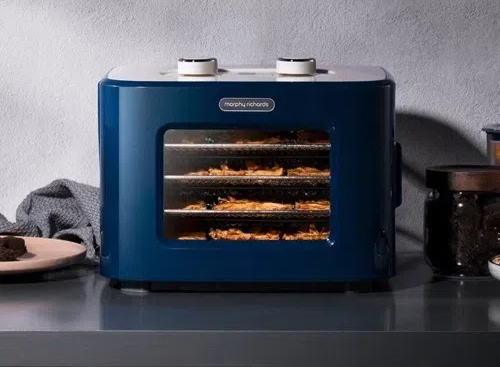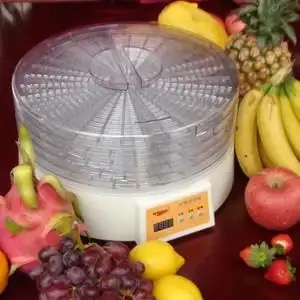In the realm of food processing, the method of drying plays a crucial role in preserving the quality, flavor, and nutritional value of food products. Among the various drying technologies available, heat pump dryers have emerged as a revolutionary solution. These dryers not only enhance energy efficiency but also ensure that food retains its essential qualities during the drying process. This article delves into the working principles of heat pump dryers, their advantages, applications in the food industry, and future trends.

Understanding Heat Pump Dryers
Heat pump dryers operate on a unique principle that sets them apart from traditional drying methods. At the core of this technology is a closed-loop system that utilizes a refrigerant to transfer heat. The main components of a heat pump dryer include:
1. Compressor: This component compresses the refrigerant, raising its temperature and pressure.
2. Evaporator: Here, the refrigerant absorbs moisture from the air, cooling down in the process.
3. Condenser: The refrigerant releases the absorbed moisture, which is then collected as water, while the air is heated and circulated back into the drying chamber.
This cycle allows heat pump dryers to recycle heat, making them highly energy-efficient. The ability to operate at lower temperatures also means that food can be dried without compromising its quality.
Advantages of Heat Pump Dryers in Food Processing
The benefits of using heat pump dryers in food processing are manifold:
1. Energy Efficiency and Cost Savings: Heat pump dryers consume significantly less energy compared to traditional dryers. This reduction in energy usage translates to lower operational costs, making them an attractive option for food manufacturers.
2. Preservation of Food Quality and Nutrients: The low-temperature drying process helps in retaining the nutritional value, color, and flavor of food products. This is particularly important for fruits, vegetables, and herbs, where quality is paramount.
3. Environmental Benefits: By utilizing less energy and reducing greenhouse gas emissions, heat pump dryers contribute to a more sustainable food processing industry. Their eco-friendly operation aligns with the growing demand for sustainable practices in food production.

Applications of Heat Pump Dryers in Food Industry
Heat pump dryers are versatile and can be used for a variety of food products, including:
1. Fruits and Vegetables: Dried fruits and vegetables are popular snacks and ingredients in many dishes. Heat pump dryers ensure that these products maintain their taste and nutritional content.
2. Herbs and Spices: The gentle drying process is ideal for herbs and spices, preserving their essential oils and flavors.
3. Meat and Fish: Dehydrating meat and fish can enhance their shelf life and flavor. Heat pump dryers provide a controlled environment for safe drying.
Case Study: A notable example of heat pump dryer application is in the production of dried apples. A food processing company implemented heat pump technology, resulting in a 30% reduction in energy costs and improved product quality.
Comparison with Traditional Drying Methods
When comparing heat pump dryers to traditional drying methods, several key differences emerge:
1. Energy Consumption: Heat pump dryers use approximately 50% less energy than conventional dryers, making them a more sustainable choice.
2. Drying Times: While heat pump dryers may take longer to dry products, the quality of the dried food is often superior. Traditional dryers can cause overheating, leading to nutrient loss.
3. Impact on Food Quality: The controlled environment of heat pump dryers minimizes the risk of spoilage and preserves the integrity of the food.
Future Trends in Heat Pump Drying Technology
The future of heat pump drying technology looks promising, with several trends on the horizon:
1. Innovations in Design: Manufacturers are continuously improving the design and efficiency of heat pump dryers, making them more compact and user-friendly.
2. Market Growth: As awareness of energy efficiency and sustainability increases, the demand for heat pump dryers in the food industry is expected to rise.
3. Integration with Smart Technology: The incorporation of smart technology into heat pump dryers will allow for better monitoring and control of the drying process, enhancing efficiency and product quality.
Conclusion
Heat pump dryers represent a significant advancement in food drying technology. Their energy efficiency, ability to preserve food quality, and environmental benefits make them an ideal choice for food processors. As the industry continues to evolve, heat pump dryers will play a crucial role in meeting the demands for sustainable and high-quality food products.

Frequently Asked Questions
1. What is a heat pump dryer?
A heat pump dryer is a type of dryer that uses a closed-loop system to recycle heat, making it more energy-efficient than traditional dryers. 2. How does a heat pump dryer work?
It works by compressing refrigerant to absorb moisture from the air, which is then condensed and collected, while the heated air is circulated back into the drying chamber. 3. What are the benefits of using a heat pump dryer for food?
The benefits include energy savings, preservation of food quality, and reduced environmental impact. 4. Can all types of food be dried using a heat pump dryer?
While many types of food can be dried, the best results are typically seen with fruits, vegetables, herbs, and meats. 5. How does a heat pump dryer compare to traditional drying methods?
Heat pump dryers are more energy-efficient, preserve food quality better, and operate at lower temperatures compared to traditional dryers. 











